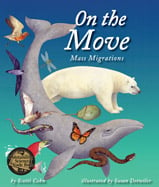Alignment to Standards for UT

| Grade | Number | Standard |
|---|---|---|
| 2 | CC-2.III.1 | Investigate relationships between plants and animals and how living things change during their lives. |
| 2 | CC-2.III.2a. | Observe and describe patterns of change in weather. |
| 2 | CC-2.III.2c. | Describe how weather affects people and animals. |
| 3 | SC-3.II | organisms depend on living and nonliving things within their environment. |
| 3 | SC-3.II.2b. | Predict the effects of changes in the environment (e.g., temperature, light, moisture) on a living organism. |
| 4 | SC-4.V.2 | Describe the common plants and animals found in Utah environments and how these organisms have adapted to the environment in which they live. |
| 4 | SC-4.V.2c. | Describe some of the interactions between animals and plants of a given environment (e.g., woodpecker eats insects that live on trees of a forest, brine shrimp of the Great Salt Lake eat algae and birds feed on brine shrimp). |
| 5 | SC-5.V.1d. | Contrast inherited traits with traits and behaviors that are not inherited but may be learned or induced by environmental factors (e.g., cat purring to cat meowing to be let out of the house; the round shape of a willow is inherited, while leaning away fr |
| K | CC-K.III.1 | Investigate changes in the seasons. |
| K | CC-K.III.1a. | Identify the seasons and represent each with pictures and songs. |
| K | CC-K.III.1b. | Observe and describe typical weather for each of the seasons. |
| K | CC-K.III.1d. | Observe and describe changes in behavior of animals as the seasons change. |
| K | CC-K.III.2c. | Describe how animals care for their young. |
| K | CC-K.III.3a. | Recognize that maps and globes are symbols for actual places. |
| K | CC-K.III.3c. | Explore basic map and globe directions and characteristics (e.g., top, bottom, right, left, land, water, Arctic Ocean, Antarctica). |